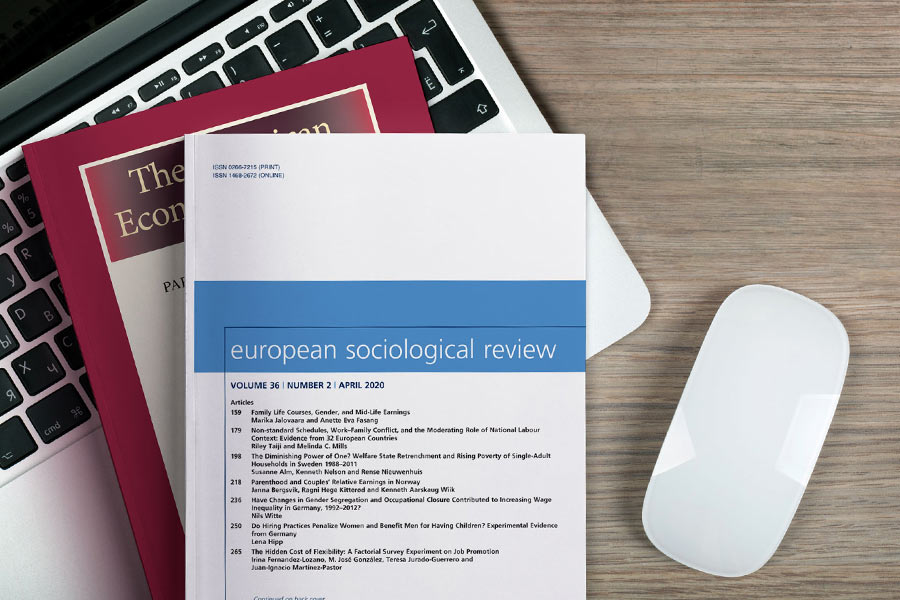Total hits 17.171
-
Examining the roots of homelessness: The impact of regional housing market conditions and the social environment on homelessness in North Rhine-Westphalia, Germany
Kröll, A. & Farhauer, O. (2012): Examining the roots of homelessness: The impact of regional housing market conditions and the social environment on homelessness in North Rhine-Westphalia, Germany. (IAB-Discussion Paper 13/2012), Nürnberg, 23 p.
-
IAB-Erhebung des Gesamtwirtschaftlichen Stellenangebots
Müller, A., Rebien, M. & Vogler-Ludwig, K. (2012): IAB-Erhebung des Gesamtwirtschaftlichen Stellenangebots. Betriebsbefragung zu Stellenangebot und Besetzungsprozessen. Wellen 2005 bis 2009 und Folgequartale. (FDZ-Datenreport 02/2012 (de)), Nürnberg, 18 p.
-
Szenarien zum Einfluss der demografischen Entwicklung auf die Arbeitslosigkeit in Sachsen-Anhalt
Kropp, P. (2012): Szenarien zum Einfluss der demografischen Entwicklung auf die Arbeitslosigkeit in Sachsen-Anhalt. Regionaler Demografie-Rechner. (IAB-Regional. Berichte und Analysen aus dem Regionalen Forschungsnetz. IAB Sachsen-Anhalt-Thüringen 02/2012), Nürnberg, 24 p.
-
Sclerosis and large volatilities: two sides of the same coin
Gartner, H., Merkl, C. & Rothe, T. (2012): Sclerosis and large volatilities: two sides of the same coin. In: Economics Letters, Vol. 117, No. 1, p. 106-109. DOI:10.1016/j.econlet.2012.04.100
-
Frankreichs Russlandpolitik nach den Präsidentschaftswahlen: Zäsur, Neuausrichtung oder status quo?
Falkenhain, M. (2012): Frankreichs Russlandpolitik nach den Präsidentschaftswahlen: Zäsur, Neuausrichtung oder status quo? In: Russland-Analysen No. 237, p. 11-13.
-
The benefits of migration
Damelang, A. & Haas, A. (2012): The benefits of migration. Cultural diversity and labour market success. In: European Societies, Vol. 14, No. 3, p. 362-392. DOI:10.1080/14616696.2012.676758
-
Worker flows in Germany: Inspecting the time aggregation bias
Nordmeier, D. (2012): Worker flows in Germany: Inspecting the time aggregation bias. (IAB-Discussion Paper 12/2012), Nürnberg, 36 p.
-
Bayesian procedures as a numerical tool for the estimation of dynamic discrete choice models
Haan, P., Kemptner, D. & Uhlendorff, A. (2012): Bayesian procedures as a numerical tool for the estimation of dynamic discrete choice models. (DIW-Diskussionspapiere 1210), Berlin, 18 p.
-
Field analysis as a research programme : vol. 1: The programmatic core
Bernhard, S. & Schmidt-Wellenburg, C. (eds.) Baier, C., Maffeis, S., MacAdam, D., Brabandt, G., Lebaron, F., Schmitz, A., Hofbauer, J., Münch, R., Hartmann, E., Diaz-Bone, R., Hamann, J., Neumann, S., Füssel, M., Trüter, I., Florian, M., Mejstrik, A. & Fligstein, N. (sonst. bet. Pers.) (2012): Feldanalyse als Forschungsprogramm. Bd. 1: Der programmatische Kern. Wiesbaden: VS, Verl. für Sozialwissenschaften, 453 p. DOI:10.1007/978-3-531-94259-9
-
Codependent VAR models and the pseudo-structural form
Trenkler, C. & Weber, E. (2012): Codependent VAR models and the pseudo-structural form. (University of Mannheim. Department of Economics. Working Paper 12-10), Mannheim, 18 p.
-
Field analysis as a research programme : Vol. 2: formation of theories about the subject
(2012): Feldanalyse als Forschungsprogramm. Bd. 2: Gegenstandsbezogene Theoriebildung. Wiesbaden: VS, Verl. für Sozialwissenschaften, 392 p. DOI:10.1007/978-3-531-94263-6
-
Churning in the context of human resource policies : recent developments in employment systems
Hohendanner, C. (2012): Churning im Kontext betrieblicher Personalpolitik. Aktuelle Entwicklungen der Beschäftigungssysteme. In: Industrielle Beziehungen, Vol. 19, No. 2, p. 124-153.
-
Bottlenecks on the labour market : changes in behaviour in respect to education and gainful employment mitigate the shortage of skilled labour. New insights from the BIBB (Federal Institute for Vocational Education and Training)-IAB Qualification and Occupational Field Projections up to the year 2030
Helmrich, R., Zika, G., Kalinowski, M., Wolter, M., Bott, P., Bremser, F., Drosdowski, T., Hänisch, C., Hummel, M., Maier, T. & Schandock, M. (2012): Engpässe auf dem Arbeitsmarkt: Geändertes Bildungs- und Erwerbsverhalten mildert Fachkräftemangel. Neue Ergebnisse der BIBB-IAB-Qualifikations- und Berufsfeldprojektionen bis zum Jahr 2030. (BIBB-Report 2012,18), 14 p.
-
More hours, more jobs?
Andrews, M., Gerner, H., Schank, T. & Upward, R. (2012): More hours, more jobs? The employment effects of longer working hours. (IZA discussion paper 6652), Bonn, 26 p.
-
Introduction: Cognitive and non-cognitive skill formation and labor market outcomes
Anger, S. (2012): Introduction: Cognitive and non-cognitive skill formation and labor market outcomes. Berlin, 10 p.
-
The longterm effects of UI extensions on employment
Schmieder, J., Wachter, T. & Bender, S. (2012): The longterm effects of UI extensions on employment. In: The American Economic Review. Papers and Proceedings of the Annual Meeting of the American Economic Association, Vol. 102, No. 3, p. 514-519. DOI:10.1257/aer.102.3.514
-
A simple mobility game for couples' migration decisions and some quasi-experimental evidence
Abraham, M. & Nisic, N. (2012): A simple mobility game for couples' migration decisions and some quasi-experimental evidence. In: Rationality and society, Vol. 24, No. 2, p. 168-197. DOI:10.1177/1043463112440684
-
Temporary agency work: A curse or a blessing for the German labour market?
Möller, J. (2012): Zeitarbeit: Fluch oder Segen für den deutschen Arbeitsmarkt? In: R. B. Bouncken, M. Bornewasser & L. Bellmann (Hrsg.) (2012): Die neue Rolle der Zeitarbeit in Deutschland (Beiträge zur Flexibilisierung, 03), p. 235-240.
-
Field analysis as a research programme
Bernhard, S. & Schmidt-Wellenburg, C. (2012): Feldanalyse als Forschungsprogramm. In: S. Bernhard & C. Schmidt-Wellenburg (Hrsg.) (2012): Feldanalyse als Forschungsprogramm : Bd. 1: Der programmatische Kern, p. 27-56. DOI:10.1007/978-3-531-94259-9_2
-
Informational capital as a transnational resource
Bernhard, S. (2012): Informationelles Kapital als transnationale Ressource. In: S. Bernhard & C. Schmidt-Wellenburg (Hrsg.) (2012): Feldanalyse als Forschungsprogramm : Bd. 2: Gegenstandsbezogene Theoriebildung, p. 195-216. DOI:10.1007/978-3-531-94263-6_8



